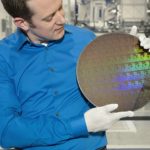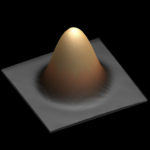If quantum isn’t to be a technology “that’s always 10 years away,” then quantum error correction (QEC) – one of the high hurdles to quantum becoming a practical reality – must be tamed. This week at a Wall Street Journal virtual CIO Network event, IBM’s SVP and Director of IBM Research Dario Gil said the […]
IBM Says Quantum Error Correcting Software Coming in 2023 – ‘Quantum Really Comes of Age’
IBM Research AI Predictions for 2020
In this special guest feature, IBM’s VP of AI Research Sriram Raghavan shares the company’s predictions for AI in 2020. “In 2020, three themes will shape the advancement of AI: automation, natural language processing (NLP), and trust. Broadly, we’ll see AI systems work more quickly and more easily for data scientists, businesses, and consumers through automation.”
IBM Research Applies Deep Learning for Detecting Glaucoma
Over at the IBM Blog, Rahil Garnavi writes that IBM researchers have developed new techniques in deep learning that could help unlock earlier glaucoma detection. “Earlier detection of glaucoma is critical to slowing its progression in individuals and its rise across our global population. Using deep learning to uncover valuable information in non-invasive, standard retina imaging could lay the groundwork for new and much more rapid glaucoma testing.”
Video: What IBM’s 5 Nanometer Transistors Mean for You
In this video, Nicolas Loubet from IBM Research describes how IBM’s new 5 nanometer transistors will provide huge power savings that could enable mobile devices to run for days without a charge. “The resulting increase in performance will help accelerate cognitive computing, the Internet of Things (IoT) and other data-intensive applications delivered in the cloud.”
Leaping Forward in Energy Efficiency with the DOME 64-bit μDataCenter
In this slidecast, Ronald P. Luijten from IBM Research in Zurich presents: DOME 64-bit μDataCenter. “I like to call it a datacenter in a shoebox. With the combination of power and energy efficiency, we believe the microserver will be of interest beyond the DOME project, particularly for cloud data centers and Big Data analytics applications.”
Podcast: IBM Researchers Store Data on a Single Atom
Today IBM announced it has created the world’s smallest magnet using a single atom – and stored one bit of data on it. Currently, hard disk drives use about 100,000 atoms to store a single bit. The ability to read and write one bit on one atom creates new possibilities for developing significantly smaller and denser storage devices, that could someday, for example, enable storing the entire iTunes library of 35 million songs on a device the size of a credit card.
IBM Research Alliance Develops First 7nm Node
Today IBM Research announced that working with alliance partners at SUNY Polytechnic Institute’s Colleges of Nanoscale Science and Engineering it has produced the semiconductor industry’s first 7nm node test chips with functional transistors. According to IBM, the breakthrough underscores the company’s continued leadership and long-term commitment to semiconductor technology research.
Memory-Driven Near-Data Acceleration and its Application to DOME/SKA
In this video from the 2014 HPC User Forum in Seattle, Jan van Lunteren from IBM Research Labs in Zurich presents: Memory-Driven Near-Data Acceleration.











